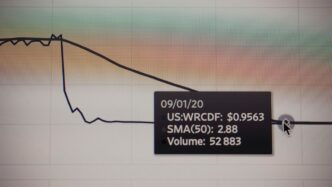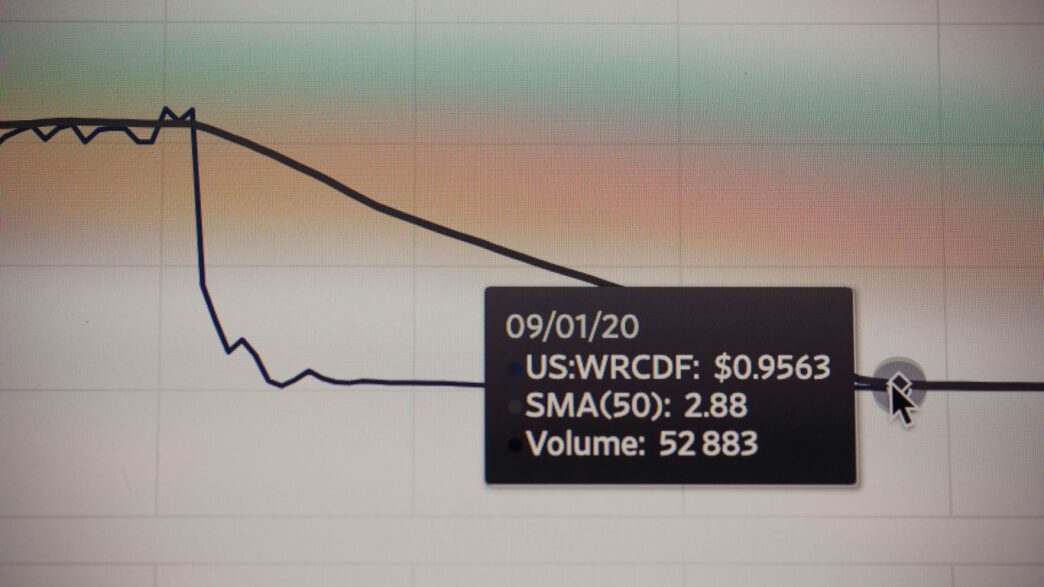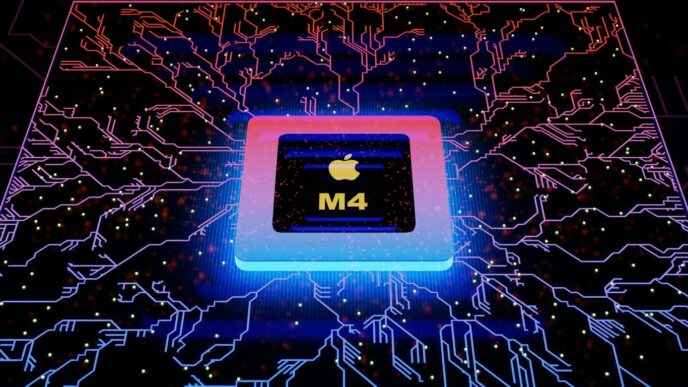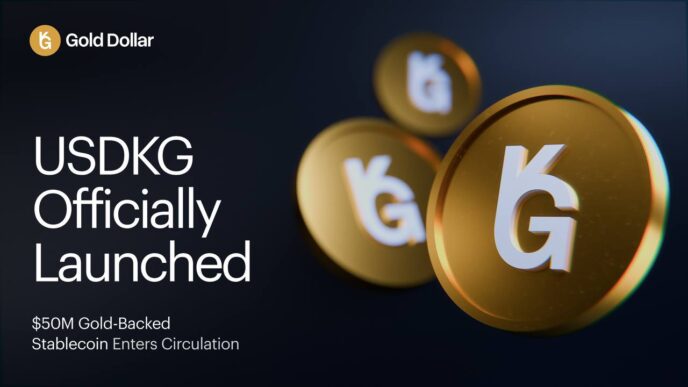Trying to figure out if you should buy the NVIDIA RTX 4090 in 2025 is a bit like shopping for a car during a gas shortage—prices are all over the place, and nothing feels like a good deal. The nvidia rtx 4090 price has been on a wild ride lately. With new cards coming out, tariffs making things more expensive, and stock being unpredictable, it’s tough to know if now is the right time to pull the trigger. Let’s break down what’s happening with the RTX 4090 and see if it’s smart to buy one now or hold off for something newer—or cheaper.
Key Takeaways
- The nvidia rtx 4090 price in 2025 is much higher than its original launch, often selling for $3,000 or more if you can find one in stock.
- Newer cards like the RTX 5090 and 5080 are out, but the 4090 still holds up well in performance, especially with its 24GB VRAM.
- US tariffs and ongoing GPU shortages are keeping prices high across the board, not just for the RTX 4090.
- If you don’t need the absolute best right now, waiting for prices to settle or for next-gen cards could save you a lot of money.
- There are solid alternatives from AMD and Intel, and even last-gen cards might make more sense for most gamers than chasing the 4090.
NVIDIA RTX 4090 Price Trends in 2025
Current Market Prices and Availability
Right now, getting your hands on a new RTX 4090 feels like trying to score playoff tickets the night before the game—expect to pay a premium. The original MSRP for the RTX 4090 was $1,600, but this year prices have regularly ballooned to $2,500 or even over $3,000. For most people, it’s just not a good value at these levels. Those super-inflated prices are mostly found with resellers and on marketplaces; standard retailers often have zero inventory. Used cards pop up here and there, but even those are asking sky-high prices.
| Model | MSRP | Typical 2025 Price (New) | Stock |
|---|---|---|---|
| RTX 4090 | $1,600 | $2,500 – $3,000+ | Rare |
| RTX 5080 | $1,000 | $1,200+ | Low |
| RTX 5070 Ti | $750 | $800 – $1,000 | Limited |
So if you spot a 4090 at anything close to its launch price—well, that’s a small miracle in this market.
Factors Affecting RTX 4090 Pricing
There’s a perfect storm hitting GPU prices in 2025. A few things are keeping the 4090 crazy expensive:
- Dropped supply: Everyone’s still scrambling to buy the new generation, but there just aren’t enough cards.
- Tariffs: New US tariffs on imported tech have driven up costs for just about everything, especially GPUs.
- Demand pressure: Gamers and content creators both still want flagship performance, so sellers ask (and get) top dollar.
Ironically, launches of the 50-series made things worse. Instead of making old cards cheaper, the new releases have pushed more buyers back to whatever stock is left from the past generation, driving prices even higher.
Comparison With Previous Years
Back when the 4090 came out in late 2022, snagging one around $1,600 was possible for a while. Most folks ended up paying more, but deals did exist if you were fast. Fast forward to 2024, and prices started to jump. Once tariffs and the 5090/5080 launches happened, prices went through the roof. Here’s a look at how things changed:
| Year | Launch MSRP | Average Street Price |
|---|---|---|
| 2022 | $1,600 | $1,600–$2,000 |
| 2023 | $1,600 | $1,800–$2,100 |
| 2024 | $1,600 | $2,200–$2,800 |
| 2025 | $1,600 | $2,500–$3,000+ |
In short: price trends look bleak if your wallet isn’t overflowing. Buying the 4090 in 2025 means you’re paying a premium unless you somehow luck into a rare deal.
How the RTX 4090 Stacks Up Against the Latest GPU Releases

Let’s cut through the hype: two years after its big debut, the RTX 4090 is still a major contender in Nvidia’s lineup, but how does it really compare to the latest cards dropping in 2025? Here’s an honest look at where the 4090 stands now that the RTX 5090, 5080, and the rest of the new Blackwell cards are out there.
Performance Versus the RTX 5090 and 5080
The new RTX 5090 takes the top spot this year, but the difference may not matter as much as you’d think unless you’re running the most demanding games at 4K with every trick enabled. At 4K, the 5090 delivers a 24% performance boost compared to the 4090, but at 1440p, it drops closer to 13%. If you’re someone who mostly games at 1080p, you’ll barely notice a jump—about 5% at most for ultra settings, dropping even further at less intense settings (performance boost over the 4090).
Here’s a quick rundown comparing raw specs and typical prices:
| GPU | VRAM | Average Price (2025) | Relative 4K Performance | Main Use |
|---|---|---|---|---|
| RTX 4090 | 24GB | $1,400 – $1,700 | 1.0x | High-end gaming, creative workloads |
| RTX 5080 | 16GB | $1,200 – $1,300 | 0.93x | Great for 4K, slightly behind 4090 in top scenarios |
| RTX 5090 | 32GB | $2,500+ | 1.24x | Ultra high-end, niche and professional use |
Bottom line: unless you really need that extra juice for 4K, the 4090 feels just as snappy as the 5080 in most games, especially at lower resolutions.
Value Proposition Compared to the Blackwell Series
It’s easy to look at the Blackwell cards (RTX 5070 Ti, 5080, etc.) and wonder if they make last year’s 4090 obsolete, but it’s not that simple:
- The RTX 4090 still holds up with more VRAM than the 5080 and better raw performance in several titles.
- Blackwell cards offer features like DLSS 4 and Multi-Frame Generation, which the 4090 supports for the most part, so you’re not missing much in key areas.
- The 5080 is easier to find for retail, but you don’t lose that much by sticking with the 4090.
Interestingly, getting a 4090 (if you can still snag one around $1,500) means you keep a card that balances future-readiness and reliable top-shelf performance—all while dodging the high prices of the 5090.
Longevity and Feature Support
- RTX 4090 is still locked and loaded for all the biggest games and creative workflows.
- DLSS 3 and the most important parts of DLSS 4 are fully supported, so image quality stays sharp.
- With 24GB VRAM, running out of memory is rarely—if ever—an issue, even at 4K or with next-gen textures.
- Meanwhile, many of the supposed ‘killer features’ of new Blackwell cards are nice but hardly game-changers for most actual players.
So, while the RTX 4090 may not be the shiniest new toy on the shelf anymore, it’s still a smart pick if you want a card to last you several years without breaking the bank. Unless you need the absolute best, the RTX 4090 remains a solid investment. If you’re weighing up what to buy right now, the 4090 is still strongly in the mix for high-end PC builds, even with the excitement swirling around Nvidia’s newest flagships.
The Impact of Supply Shortages and Tariffs on RTX 4090 Prices
Stock Levels in 2025
There’s no sugarcoating it—finding an RTX 4090 this year feels like searching for a rare Pokémon. Supply shortages have become the norm, not the exception. A lot of folks hoped things would settle down after the next-gen GPUs landed, but that hasn’t really happened. Stock keeps vanishing fast for two main reasons:
- Pent-up demand from gamers who skipped the 4080 and wanted a big upgrade
- Scalpers and resellers snapping up every single card they can get
- Fewer new cards shipped than expected due to ongoing production hiccups
- Many jumped on older cards when the 4090 became impossible to find, thinning out even secondary options
Bottom line: if you spot a 4090 in stock, it’s usually overpriced—sometimes double its launch price—and gone in a blink.
Influence of US Tariffs on GPU Prices
One of the biggest headaches for buyers in 2025? Tariffs. The ongoing US tariffs on Chinese imports hit the PC hardware world hard. Nearly every GPU, including the 4090, saw price hikes, and some retailers even tacked on sneaky “tariff surcharges.” Here’s how it’s playing out:
| Year | Average US Tariff (%) | Typical RTX 4090 MSRP | Street Price Range |
|---|---|---|---|
| 2023 | 0 | $1,599 | $1,700 – $2,200 |
| 2024 | 15 | $1,599 | $2,100 – $2,900 |
| 2025 | 25 | $1,599 | $2,700 – $3,200+ |
The tariffs basically killed any hope for a price drop, so cards are mostly well above retail wherever you look.
Price Volatility Analysis
Let’s talk price swings. The 4090 was never a budget card to begin with, but lately, prices have barely made sense. This isn’t just due to tariffs and short supply; random drops or sudden restocks make the situation even messier.
What’s causing this volatility?
- Sudden stock drops, either from official partners or third-party sellers
- New tariffs passed or increased, instantly bumping prices overnight
- Fluctuations in global shipping and raw materials (still recovering from pandemic years)
- Manufacturers shifting more resources to new-gen 50-series cards, leaving fewer 4090s produced
If you’re tracking prices with an alert tool, you’ll see wild swings that rarely stick around. Sometimes the card pops up at its original price, but it sells out within minutes or even seconds. For the majority, it’s a waiting game—unless you’re ready to overpay immediately.
In short: supply issues and trade policy have made the 4090 a tricky (and expensive) card to score this year, with no real sign of change anytime soon.
Should You Buy the RTX 4090 or Wait for New Releases?
Buying a graphics card has felt like a gamble for the last few years, and 2025 is no different. The RTX 4090 is still a powerhouse, but with the RTX 50-series now out, many are wondering if it makes sense to grab the 4090 or hold off for what’s next. Let’s break down the main things you should think about before pulling the trigger.
Assessing the Upgrade Cycle
If your current GPU is really struggling—choppy gameplay, stuttering, and texture pop-ins—you may not be able to wait much longer. But the big question: is dropping $2,500+ on a 4090 worth it with the RTX 5090 and 5080 out there?
- If you have anything below an RTX 3080, the difference in performance going up to a 4090 is wild. New games at 4K actually run well, future titles shouldn’t make it sweat, and upscaling tech helps stretch value further.
- The 4090 is only about 30% slower than the 5090 according to recent reviews, but it’s less than half the price in some cases.
- Skip the 4070s and 4060s at today’s high prices—performance jumps aren’t big enough, especially for the cash.
Here’s a quick table showing typical street prices for the top-tier cards in October 2025:
| GPU | Performance (vs 4090) | Typical Price (USD) |
|---|---|---|
| RTX 5090 | ~30% faster | $2,500-$3,000 |
| RTX 5080 | Slightly slower | $1,200+ |
| RTX 4090 | Reference point (100%) | $1,600-$3,000 |
Futureproofing With 24GB VRAM
The 4090’s 24GB of VRAM is still overkill for most games right now, but some new releases are starting to chew through even that. If you want to play at 4K with all the bells and whistles, or you dabble in professional creative software, that extra memory really stretches the card’s lifespan.
- Play next-gen games at higher settings for longer
- Better for AI workloads and heavy texture mods
- Avoids most of the VRAM bottlenecks that limit the mid-range cards
Pros and Cons of Waiting Versus Buying Now
Before making any decision, try weighing the pros and cons. These aren’t just buzzwords—think about your situation, games you play, and the prices you’re actually seeing in stores.
Pros of Buying Now
- Get top-of-the-line performance today
- Avoid the endless waiting game as every new launch is followed by shortages and price spikes
- Start using new Nvidia features like DLSS 4 if you upgrade
Cons of Buying Now
- You might spend more than the next-gen card price—with tariffs and shortages, prices of the 4090 have shot up to nearly $3,000 at times
- RTX 5090 offers ~30% better speeds, though for double the cost in most cases
- New cards bring new tech, like higher VRAM configs and frame gen improvements—do you want to miss out?
Many people regret waiting too long for the “perfect time,” only to see prices stay high for months. If you just want great gaming now or can find the 4090 at a reasonable price, it’s not a bad option. But if you’re not in a hurry and can deal with another few months of waiting, the next wave of GPUs might bring more options, maybe even deals. There’s plenty of good info in lists of the best graphics cards for your money if you’re trying to compare real-world value.
Bottom line: only buy the RTX 4090 now if the performance and price make sense for your particular needs. Otherwise, patience might very well pay off.
Alternatives to the RTX 4090 for Enthusiast Gamers
If you’ve balked at the price or power demands of the RTX 4090, you’re not alone. There are plenty of GPUs that might fit your setup (and budget) a little better, especially in 2025 when more high-end cards are fighting for your attention. This section digs into the best alternatives for gamers who want fast, future-ready hardware without going all-in on the 4090.
Comparing Cost and Performance With RTX 5080 and 5070 Ti
With the release of Nvidia’s new Blackwell series, a lot of folks are asking whether the RTX 5080 or 5070 Ti offer a sweeter spot for high-refresh 4K and demanding ray-traced games without the $2,000+ investment.
Here’s a look at how the newest contenders stack up against the RTX 4090:
| GPU | Avg. 4K FPS | VRAM | Power Draw | Typical Price (Oct 2025) |
|---|---|---|---|---|
| GeForce RTX 4090 | 110 | 24GB | 450W | ~$1,900 |
| GeForce RTX 5080 | 102 | 20GB | 375W | ~$1,350 |
| GeForce RTX 5070 Ti | 90 | 16GB | 315W | ~$850 |
- The RTX 5080 closes the gap with the 4090 in most games, but does cost fewer watts and dollars.
- The 5070 Ti is turning heads for delivering high-end 4K at less than half the cost of the 4090, so it’s perfect for folks who’d rather not cook eggs on their CPU cooler.
AMD Radeon and Intel Arc Competitors
Both AMD and Intel have stepped up in the last year. The RX 9070 and RX 9060 XT are top picks for anyone who doesn’t need Nvidia’s exclusive features like DLSS 4 or the best ray tracing.
- AMD Radeon RX 9070: Often outpaces the 5070 Ti in rasterization and comes with 16GB VRAM, making it a solid choice for 1440p and even some 4K gaming, usually priced under $750.
- Radeon RX 9060 XT: Cheaper still and great for 1080p or 1440p setups, with surprisingly strong performance in most of today’s big titles.
- Intel Arc: While the Arc B970 competes best at the budget level, it’s a wild-card option for those looking for something different—just check game compatibility first.
When to Consider Last Generation Cards
2024’s cards haven’t magically disappeared—and sometimes, last year’s big thing is this year’s real deal:
- Lower Prices: As retailers clear shelves, you can find 4080 Supers, 4070 Tis, and older Radeon XTX cards discounted by hundreds.
- Solid Performance: For most games at 1440p or even some at 4K, last-gen GPUs can still hold their own.
- Known Stability: With driver and bug-fix updates mostly settled, these cards aren’t likely to surprise you with weird glitches after install.
If you can’t justify the RTX 4090’s wallet-busting price tag, or just want a GPU that fits your gaming habits without lighting up your whole desk, these alternatives deliver most of the experience at a way friendlier cost. Decide what features matter most—performance, VRAM, ray tracing, or proprietary ecosystem—and let that lead your choice.
Buying Strategies for the RTX 4090 in 2025
So, you’ve decided that the RTX 4090 might be the card for you after all these years. It’s not cheap, not always easy to find, but it’s still packing serious punch. Figuring out how and when to buy one is a skill nowadays. Here’s what’s worked in 2025—and what could save you both cash and headaches.
How to Find the Best Deals
Finding a decent price on the 4090 right now almost feels like a sport. The card bounces around in cost thanks to new launches and weird supply hiccups. Here are some practical moves:
- Track prices from trusted retailers all week instead of just on big sales days like Black Friday—often, deals pop up randomly and then vanish.
- Consider subscribing to price alert websites or even checking local listings. Sometimes those email alerts and browser extensions pay off, especially for high-demand items.
- Join tech forums or Discord groups where folks sometimes tip off others to hidden deals or local in-store stock sightings.
It’s also worth looking at tips from advice resources, like choosing the right GPU, to match your purchase to your needs—not just your budget.
Risks and Benefits of Buying Used
Secondhand RTX 4090 cards have flooded the market, mainly because some power users upgrade every cycle. Still, tread carefully:
- Used cards might come without a warranty. If the GPU goes bad, you’re on your own for repairs.
- There’s a risk it was previously run for crypto mining, which could mean extra wear and tear—ask for its history.
- On the plus side, if you find one with a clear background and low hours, you can sometimes save several hundred dollars.
Here’s a quick look at how prices usually stack up:
| Market | Average Price (October 2025) |
|---|---|
| New | $1,599 – $1,900 |
| Used | $1,200 – $1,500 |
The savings can be real, but so is the gamble.
Timing Your Purchase for Optimal Value
What’s the best time to buy? The truth is, lately, it’s not about big shopping holidays—it’s about supply trickling in at surprising moments, especially with tariffs and new launches shaking up prices every couple of months.
- Watch for price drops right after new Nvidia announcements or AMD launches—the 4090 sometimes dips when folks chase the freshest release.
- Check in late summer and late fall, when retailers clear out inventory ahead of newer cards.
- Don’t be afraid to wait a few weeks if you see a spike. Prices have been yo-yoing all year, so patience can save real money.
Buying a 4090 is less about luck and more about persistence and timing. If you stick with it, use a mix of new and used market monitoring, and aren’t afraid to pass on bad deals, you’ll land a card you won’t regret.
Conclusion
So, after looking at where RTX 4090 prices are in 2025, it’s honestly a bit of a mess. The card is still a beast, but finding one at a reasonable price is almost impossible. Newer models like the 5090 are out, but they cost even more and don’t always offer a huge leap unless you’re chasing every last frame. If you already have a 4090, you’re probably set for a while—there’s just not enough reason to upgrade unless you really need the latest and greatest. For everyone else, waiting for prices to settle or checking out the newer midrange cards might make more sense. It’s tough to say there’s ever a “perfect” time to buy a GPU, but right now, patience might pay off. If you spot a 4090 at a fair price and you need the power, go for it. Otherwise, maybe hang tight and see how things shake out over the next few months.
Frequently Asked Questions
Why is the RTX 4090 so expensive in 2025?
The RTX 4090 is expensive because there are not enough cards to meet how many people want them. Newer GPUs like the 5090 and 5080 are also hard to find and cost a lot, which makes the 4090 even pricier. Tariffs and supply problems also make prices go up.
Is the RTX 4090 still a good graphics card in 2025?
Yes, the RTX 4090 is still one of the fastest graphics cards you can buy. It is only a little slower than the latest RTX 5090 and is faster than most other cards. It also has a lot of VRAM, which helps with new games.
Should I wait for new GPUs or buy the RTX 4090 now?
If you need a strong GPU right now and can find the 4090 at a fair price, it is a good choice. But if you can wait, new cards might come out soon, and prices could drop. It depends on how badly you need a new card.
Are there cheaper alternatives to the RTX 4090 for gaming?
Yes, there are other good GPUs like the RTX 5080, RTX 5070 Ti, and AMD’s RX 9070 XT. These cards cost less and still give great performance for most games, especially if you play at 1440p or 4K.
Is it safe to buy a used RTX 4090 in 2025?
Buying used can save you money, but there are risks. Make sure the card works well and has not been used too hard for things like mining. Try to buy from a trusted seller and ask for proof that the card works.
How can I find the best deal on a RTX 4090?
Check prices on different websites and stores, and look for sales or discounts. Sometimes used cards are cheaper, but be careful. Prices can change quickly, so it helps to watch for good deals and act fast when you see one.














